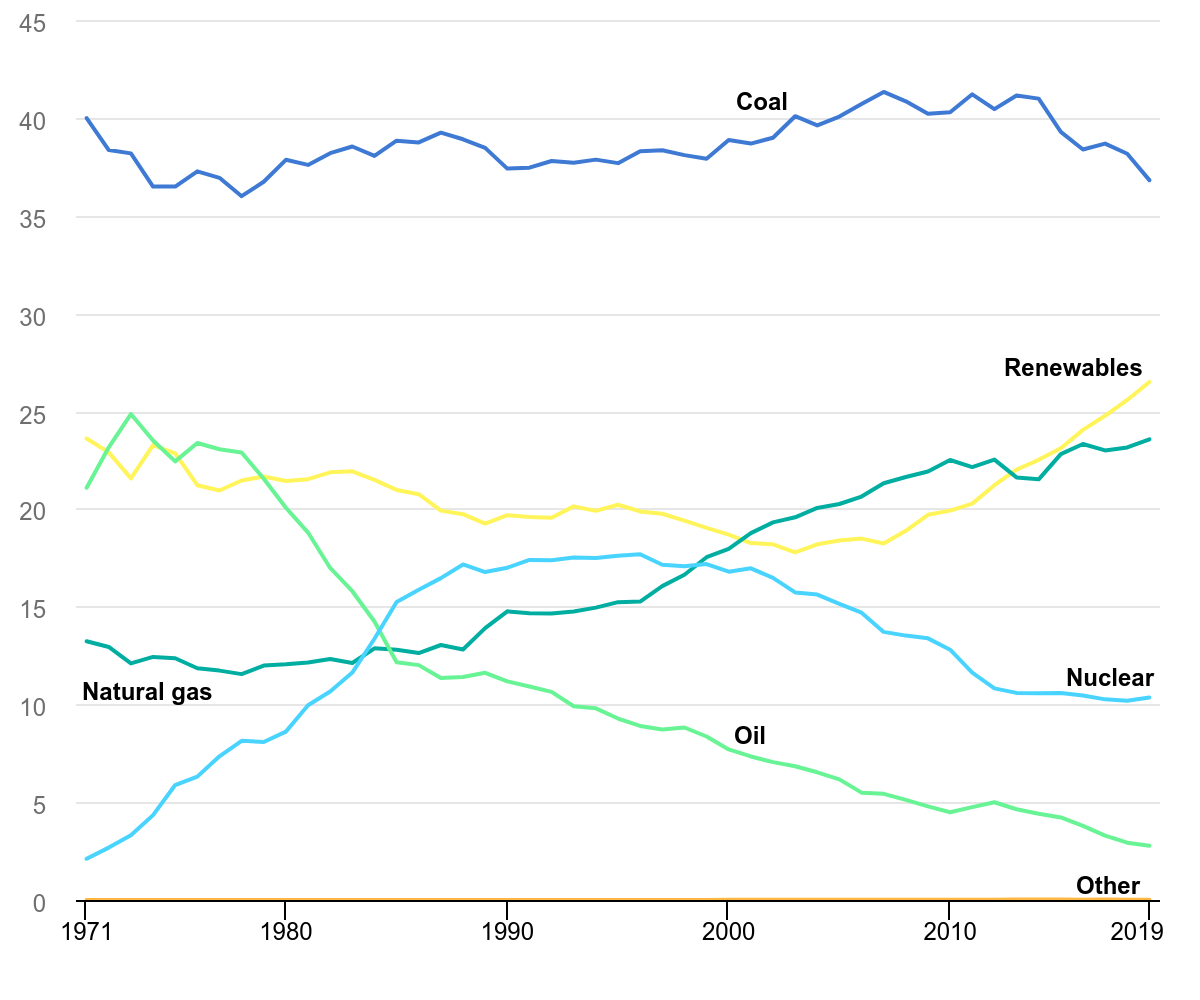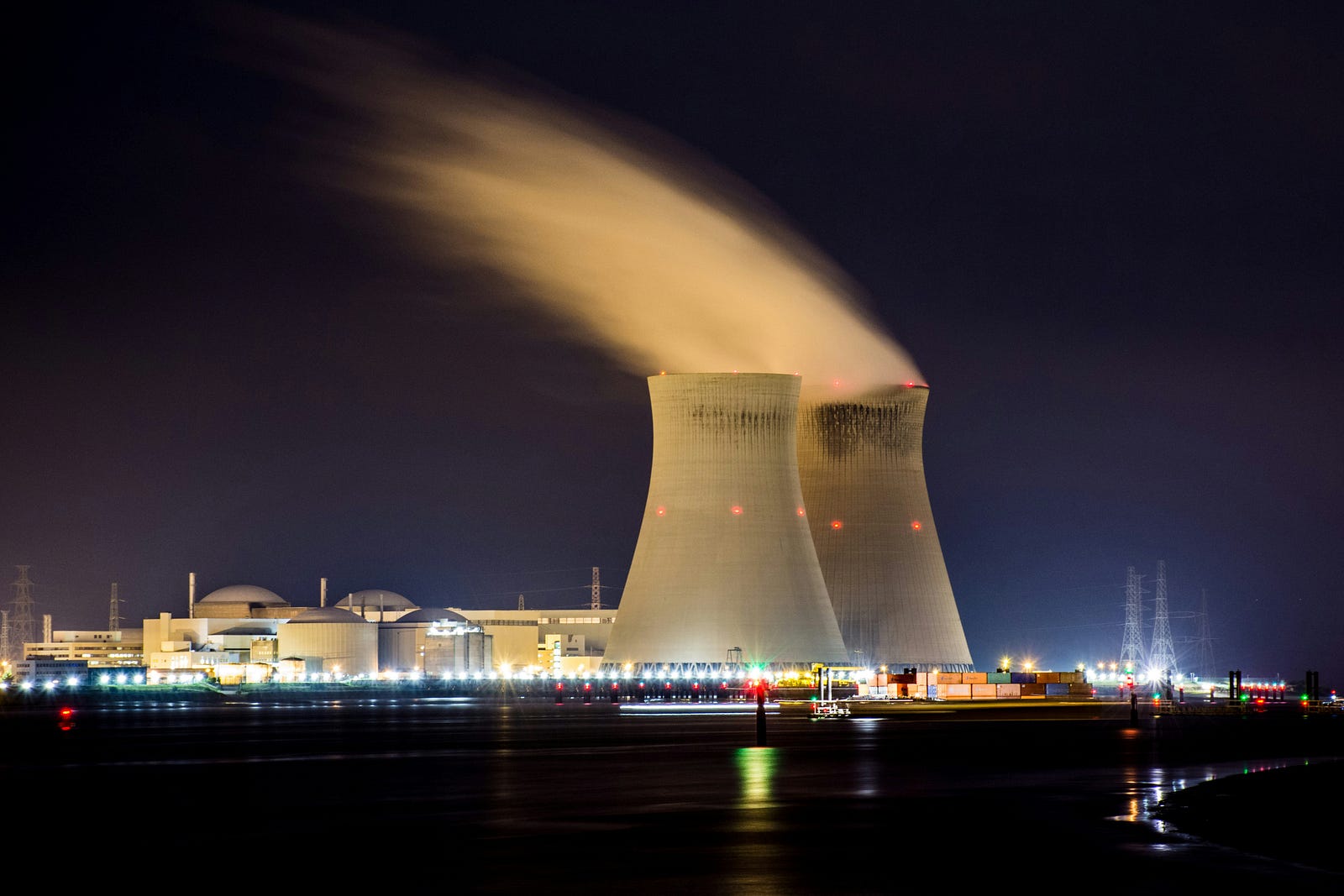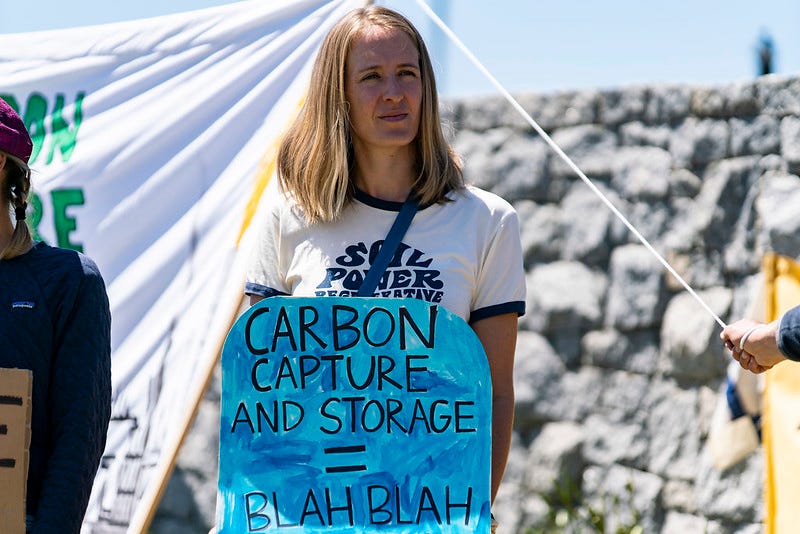Nuclear fusion is considered the holy grail of energy production
Imagine an energy source so powerful that it’s unlimited, produces no carbon emissions and hardly any waste. That’s the promise of nuclear fusion, an energy wonderfuel that may have the potential to solve the climate crisis and save the world from a devastating future.
A nuclear fusion reactor would work like an artificial sun that merges atomic nuclei, generating massive amounts of energy that can be turned into electricity. Should it work as the theory suggests, one kilogram of fusion fuel could yield the energy equivalent of ten million kilograms of fossil fuel, without the carbon emissions. Fusion would also work in any weather, unlike solar and wind, and won’t create any hazardous waste that comes with the fission process behind nuclear power plants.
The need for fusion is more pressing than ever because total carbon dioxide emissions (CO2) hit 41.6 billion tonnes in 2024, up from 40.6 billion tonnes the year before. The fact emissions continue rising is both alarming and confusing when so many governments and companies appear to be taking substantial steps to decarbonise and reduce emissions.
It’s obviously in everyone’s interests for emissions to decrease, but rising GDP for governments and increasing profits for businesses always take precedence because they support the underlying goal of the economy, which is to achieve economic growth. Growth is maintained through an increased reliance on fossil fuels to deliver the energy inputs needed to increase production and consumption, leading to rising emissions.
The energy crisis
While renewables account for roughly 30% of global electricity production, fossil fuels continue to account for over 60%. Meanwhile, fossil fuels have stubbornly accounted for around 80% of total energy demands for decades. That’s why the energy sector is the source of around three‐quarters of total greenhouse gas emissions.

The climate crisis is just as much an energy crisis. The problem boils down to how we continue to provide the required energy inputs to sustain economic growth while reducing emissions. We can’t just stop using fossil fuels because it would lead to economic collapse. That’s why nuclear fusion is seen as the holy grail in energy production. Should it be achieved it could solve the energy crisis, which could solve the climate crisis.
Scientists have tried replicating the Sun’s nuclear fusion processes for the last 70 years, with no luck. Significant barriers remain, including reaching temperatures exceeding 100 million degrees Celsius for a sustained period, maintaining stable long-term operation, and ensuring precise control of the nuclear fusion process. The technology also needs to be commercially viable.
Recent developments provide hope that fusion technology could be around the corner. China recently sustained a temperature of 100 million degrees Celsius for a record-breaking 1,066 seconds in their Experimental Advanced Superconducting Tokamak (EAST) reactor, marking a major step towards viable fusion energy generation.
Meanwhile, Commonwealth Fusion, a spin-out from the Massachusetts Institute of Technology, plans to open SPARC towards the end of 2025. This will be the first fusion reactor designed to operate at near-commercial scale. If SPARC works and provides the data Commonwealth needs, they plan to build a full-scale power plant in the early 2030s.
Imagine a scenario where Commonwealth, or some other fusion project, succeeds and builds the world’s first nuclear fusion power plant in the early 2030s. That critical breakthrough could herald the beginning of the age of nuclear fusion and abundant, clean energy. But would it solve the energy crisis and save humanity from a future of chaos, suffering and unimaginable pain?
The carbon budget

It’s hard to determine the impact of nuclear fusion without getting a sense of what the climate crisis looks like. The International Panel on Climate Change (IPCC) has set a 1.5°C target as a threshold that must not be exceeded to avoid the catastrophic impacts of warming above 1.5°C. A recent paper predicts that should global warming hit 2°C, a billion people will die in the next century.
The IPCC has calculated that to have a 50 per cent chance of restricting global warming to less than 1.5°C, the total cumulative CO2 emissions released into the atmosphere since 1850 must be kept below 2,900 billion tonnes.
Between 1850 and 2019, emissions totalled 2,400 billion tonnes — 42 per cent of that total occurred between 1990 and 2019. This means that from 2020, the maximum available ‘carbon budget’ remaining is 500 billion tonnes. The remaining budget increases to 1,150 billion tonnes for a 67 per cent chance of restricting warming to 2°C.
The carbon budget translates into dates that act as key milestones in a journey towards net zero by 2050. Net zero being a point where emissions are so low that they can be absorbed naturally by carbon sinks, like the ocean and forests.
To remain on track for the 1.5°C target, emissions need to peak by, at the latest, 2025, be cut by 43 per cent by 2030 and 84 per cent by 2050. To achieve the 2°C target, emissions need to decrease by 27 percent by 2030 and 63 percent by 2050.
In the Emissions Gap Report 2022, the UNFCCC shows that current pledges made by governments to cut emissions will translate into 1,044 billion tonnes of CO2 emissions between 2021–2050, and this figure excludes emissions from other sources. If forests are close to tipping points (which many scientists believe to be the case), the Amazon could release 90 billion tonnes of CO2 and boreal forests a further 110 billion tonnes. This would wipe out any hopes of restricting global warming to 2°C.

A silver bullet
When the first fusion reactor comes online in the early 2030’s we’ll have blown the 1.5°C carbon budget and will be well on our way to 2°C of warming. The need for a rapid energy transition will be beyond urgent. While opening the first nuclear fusion power plant would be a momentous breakthrough, the next issue will involve scaling.
An estimated capital cost of a fusion power plant with 1,000 megawatts (which can power well over 100,000 homes) of capacity would range from $2.7 to $9.7 billion. Total global electricity production was 30,000 terawatt hours in 2023 (that’s 30 billion megawatts). It’s going to take several decades, at least, from the point the first fusion power plant goes into operation for fusion to make up a substantial proportion of the electricity energy mix.

That’s too late. We don’t have a few decades to rapidly decarbonise the economy. But seeing as we’re already in a world of unlikely scenarios, let’s imagine an even less likely scenario — there is an aggressive scaling of nuclear fusion in the 2030s and 40s. Should that happen, it could be possible for fusion to replace fossil fuels as the dominant source of electricity production.
That would go a long way to achieving the goal of net zero by 2050. But that still would not mean we’re out of the woods. The planetary boundaries framework argues that to sustain the current climate atmospheric concentrations of CO2 must remain below 350 ppm.
Current CO2 concentrations are at 422 ppm (and continue to rise). To decrease concentrations of CO2 in the atmosphere, rapid decarbonisation must be combined with an increased ability of carbon sinks to absorb emissions. That’s why the IPCC considers carbon capture and storage (CSS) vital in reducing concentrations of greenhouse gases in the atmosphere.
The idea is that carbon dioxide is captured and then stored deep in the Earth’s crust, essentially creating an artificial carbon sink. The technology sounds promising but with 41 fully operational CCS facilities worldwide the industry is in its infancy.
Shell’s Quest CCS facility opened in Alberta, Canada, in 2015, it has captured just over 1 million tonnes of CO2 per year. If CCS were to play a role in becoming a significant carbon sink it would need to be scaled enormously to capture a large percentage of emissions. For argument’s sake, 4,000 such facilities would be needed to capture four billion tonnes of CO2 per year (10 per cent of global CO2 emissions).
Similarly to nuclear fusion, an obstacle to scaling is the vast cost. Shell received $865 million from the governments of Canada and Alberta to build and operate Quest. CCS isn’t designed to create any value outside of capturing CO2 so the only incentive to build and maintain such a facility seems to be for ulterior motives. In the case of Quest, it’s not coincidental that the facility is in the same state as the Alberta Tar Sands, the world’s most destructive oil operation.
The Canadian government has much to gain in investing in such a facility which feeds a perception that any continued operations at the Tar Sands can be offset by Quest. Critics argue Quest emits more CO2 than it captures. In fact, a recent report argues that 13 flagship CCS schemes, representing 55 percent of captured CO2, have either failed entirely or captured much less CO2 than expected.

Locked in
There remains a dangerous assumption that no matter how bad things get, technology will save the day. But we remain as far away as ever from solving the energy crisis. Nuclear fusion doesn’t exist and may never exist. In the highly unlikely event we achieve the holy grail in the next decade, issues with scaling mean it can’t support an energy revolution in a viable timeline. CCS, meanwhile, doesn’t work as planned.
It is beyond reckless to place so much faith in technology acting as some kind of silver bullet. The fundamental problem comes back to how we continue to provide the required energy inputs to sustain economic growth while reducing emissions. At present, we can’t. The fact emissions continue rising points to that fact.
There are a host of other reasons why solving the climate crisis involves abandoning economic growth as a development path. There is an urgent need to move to an economy that focuses on meeting human needs within environmental limits. That objective forms the foundation of post-growth economic ideas. And any approach to achieving that goal must involve dramatically decreasing the energy intensity of the economy.
That can’t be done without transforming how people live their lives. Consumerism must be replaced with radically new forms of meaning. But as things stand, no one will voluntarily give up the energy-intensive lifestyles that are intertwined with high living standards. To give up elements of life that have become basic expectations will feel draconian and disproportionate to the problem at hand.
That’s the fundamental problem with the climate crisis. We are in the midst of a climate emergency, but it’s only when we’re inundated by crisis after crisis that incapacitate governments; when chronic shortages put an end to consumer culture; when the heart of the system is torn out and the fabric of society is in ruins. When the emergency feels like one and things become so bad there is no other option, that’s when people will accept the need for radical transformation. Until then, everyone will continue to have their cake and eat it, and we’ll continue to veer towards climate collapse.



